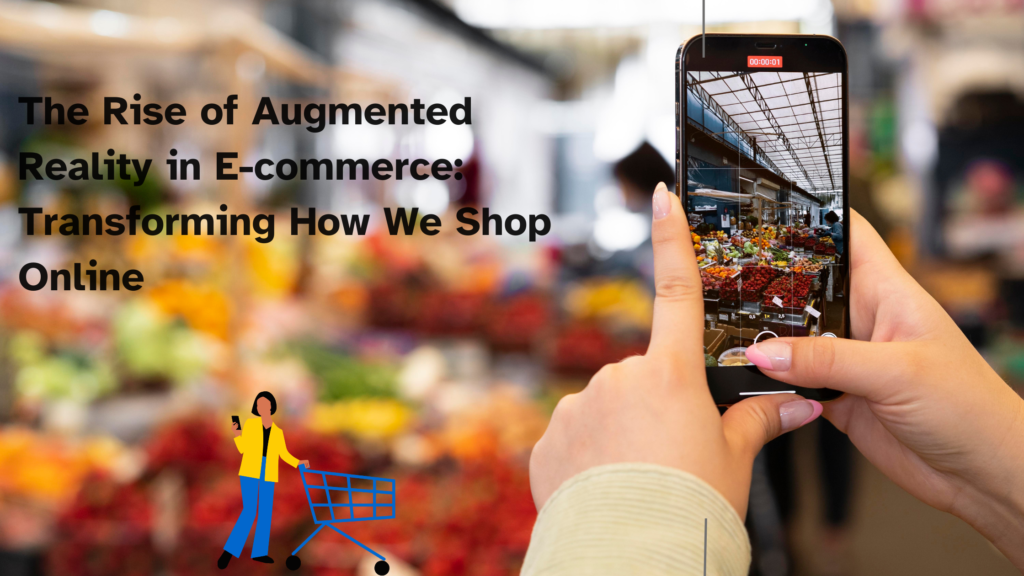In the ever-evolving landscape of online shopping, one technology has been making significant waves – Augmented Reality (AR). Augmented Reality has transformed the way we shop online, offering a dynamic and immersive experience that bridges the gap between the digital and physical worlds. In this article, we will explore the rise of Augmented Reality in e-commerce and how it is reshaping the online shopping experience for consumers.
What is Augmented Reality (AR)?
Augmented Reality is a technology that overlays digital information, such as images, videos, or 3D models, onto the real world through a device’s camera. Unlike Virtual Reality (VR), which immerses users in a completely virtual environment, AR enhances our perception of the real world by adding digital elements to it. This technology has found its way into e-commerce, revolutionizing the way consumers interact with products online.
Try Before You Buy
One of the most compelling aspects of AR in e-commerce is the ability to “try before you buy.” Traditionally, online shoppers had to rely on static images and product descriptions to make purchasing decisions. With AR, customers can now visualize products in their own environment, making informed choices.
For example, if you’re shopping for furniture, AR apps allow you to see how a particular couch or coffee table would look in your living room. This eliminates the uncertainty that often comes with online purchases and enhances the overall shopping experience.
Enhanced Product Visualization
Augmented Reality goes beyond simply placing virtual objects in your surroundings. It allows for interactive product visualization, giving consumers a deeper understanding of the product’s features and functionality.
Consider shopping for a new smartphone. With AR, you can point your camera at the phone and instantly access information about its specifications, watch 3D models that showcase its design, and even see how various phone cases would look on it. This level of interactivity brings products to life in a way that was previously impossible.
Redefining the Apparel Industry
The fashion industry has seen a profound impact of AR technology. Virtual fitting rooms enable shoppers to try on clothes virtually without the need to visit a physical store. You can see how that trendy dress or suit fits your body, even down to the smallest details like the fabric’s texture.
This innovation not only saves time but also reduces the hassle of returning ill-fitting garments, contributing to more sustainable shopping practices. Brands like IKEA, Sephora, and Gap have embraced AR to provide personalized experiences to their customers.
Enhanced Engagement and Brand Loyalty
Engagement is crucial in e-commerce, and AR has become a powerful tool for creating memorable and shareable shopping experiences. Brands that incorporate AR into their apps or websites often see increased user engagement and brand loyalty.
For example, makeup brands like MAC and L’Oréal have AR beauty apps that let users virtually try on different makeup products, shades, and looks. This not only helps customers make better choices but also encourages them to share their augmented reality makeovers on social media, effectively becoming brand advocates.
Convenience and Accessibility
The convenience of AR in e-commerce cannot be overstated. It enables shoppers to explore products from the comfort of their homes or any location, 24/7. Whether you’re considering buying a new piece of furniture, a pair of sneakers, or even a car, AR brings the showroom to you.
Moreover, AR is accessible to anyone with a smartphone or tablet, making it an inclusive technology that doesn’t require expensive hardware or specialized devices. This accessibility has democratized the shopping experience, making it more equitable for all consumers.
Bridging the Gap Between Online and Offline Retail
While e-commerce has gained immense popularity, physical retail stores still hold a special place for many shoppers. AR is bridging the gap between these two worlds. Brands are using AR to create immersive in-store experiences, blending the benefits of online shopping with the tactile nature of in-person shopping.
For instance, some stores offer AR-powered maps to help customers navigate large shopping centers, while others use AR to provide additional information about products on physical store shelves. This convergence of online and offline retail experiences offers consumers the best of both worlds.
The Future of AR in E-commerce
As technology continues to advance, the future of AR in e-commerce looks promising. We can expect to see even more innovative applications, improved accuracy, and increased realism in AR experiences. Additionally, as more businesses recognize the value of AR, its adoption will likely become more widespread.
Conclusion
Augmented Reality is revolutionizing the way we shop online, offering a dynamic and immersive experience that enhances product visualization, convenience, and engagement. From trying on clothes virtually to visualizing furniture in your home, AR has transformed the e-commerce landscape, making online shopping more interactive and enjoyable. As the technology continues to evolve, we can expect even more exciting developments in the world of AR, further blurring the lines between the digital and physical shopping experiences. So, the next time you shop online, don’t be surprised if you find yourself trying on a virtual pair of shoes or visualizing that new piece of furniture in your living room – it’s all thanks to the rise of Augmented Reality in e-commerce.

